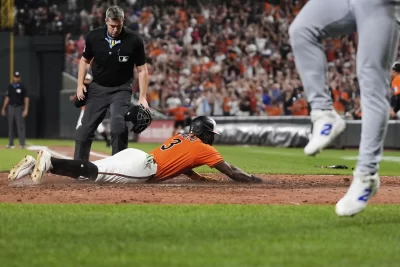
With a cautious calm prevailing over the border area in south Lebanon on Saturday, the second day of a four-day cease-fire between Hamas and Israel, villages that had emptied of their residents came back to life — at least briefly.
Shuttered shops reopened, cars moved through the streets, and a family on an outing posed for photos in front of brightly colored block letters proclaiming “I (HEART) ODAISSEH” in one border town, with the tense frontier as a backdrop.
Around 55,500 Lebanese are displaced by the clashes between the Lebanese militant group Hezbollah and Israeli forces since the beginning of the Israel-Hamas war, according to the International Organization for Migration.
The fighting has killed more than 100 people in Lebanon, including more than a dozen civilians — three of them journalists — and 12 people on the Israeli side, including four civilians.
While Lebanon and Hezbollah weren’t officially parties to the cease-fire between Israel and Hamas, it has brought at least a temporary halt to the daily exchanges of rockets, artillery shelling and airstrikes. Some Lebanese took the opportunity to inspect their damaged houses or to pick up belongings.
Abdallah Quteish, a retired school principal, and his wife, Sabah, fled their house in the village of Houla — directly facing an Israeli military position across the border — on the second day of the clashes. They went to stay with their daughter in the north, leaving behind their olive orchard just as the harvest season was set to start.
They returned to their house on Friday and to an orchard where the unharvested olives were turning dry on the branches.
“We lost out on the season, but we’re alright … and that’s the most important thing,” Sabah said. “God willing, we’ll stay in our house if the situation remains like this.”
Others were less optimistic.
On the western side of the border in the village of Marwaheen, Khalil Ghanam had come on Saturday to pack up the remaining stocks from his cafe on the frontier road and take them to Beirut.
The cafe has been closed since Oct. 13, the day that Reuters journalist Issam Abdallah was killed and six other people were wounded in an Israeli strike in nearby Alma al-Shaab. Shells also fell next to the cafe, leaving mangled remnants of what used to be its outdoor seating.
“We say God willing nothing bad will happen, but the situation now is difficult, and as I see it we’re heading into a long difficult period,” Ghanam said.
Others never left their villages.
In Kfar Kila on Saturday, iron worker Hussein Fawaz picked through the charred shell of his house, hit by an airstrike two days earlier — no one was inside at the time, but the family’s furniture, school books and household goods were destroyed.
Fawaz had sent his wife and three children to stay with relatives soon after the war began, but he stayed in the village because his parents refused to go. He still has no plans to leave.
“Where would we go? This is our land and our home. We’re staying here,” he said. “No one knows what will happen, but we hope things will stabilize and the war will end.”
The general calm of the cease-fire was punctuated by scattered moments of tension. The Israeli military said Saturday that its air defenses intercepted a “suspicious aerial target” that entered Israeli airspace from Lebanon and that it had shot down a missile launched from Lebanon at an Israeli drone.
Meanwhile, the U.N. peacekeeping force in south Lebanon said one of its patrols in a border area was hit by gunfire from Israeli forces, causing no injuries but damaging the vehicle.
UNIFIL said in a statement that the shooting in the border village of Aitaroun occurred during “a period of relative calm” along the Lebanon-Israel border.
“This attack on peacekeepers, dedicated to reducing tensions & restoring stability in south Lebanon, is deeply troubling,” UNIFIL tweeted.
The Israeli military didn’t immediately respond to a request for comment.







